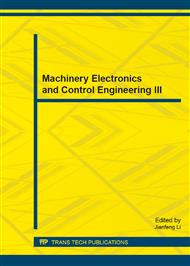p.439
p.443
p.448
p.452
p.456
p.461
p.465
p.470
p.476
Numerical Simulation of the Interaction between Surface Waves and Horizontal Plates at Free Surface
Abstract:
A horizontal plates flock like Lotus leaves can attenuate incident surface water waves. This paper tries to simulate a numerical wave tank by FLUENT CFD software using k-ω turbulence model in a two-dimensional domain. And a 2nd-order Stokes wave is made by the boundary wave-making method, and attenuated by three kinds of horizontal plates flocks with different relative lengths (flock length/wave length). A flock of horizontal plates consists of multiple plates interspersed with gaps. However the leaves have both movement and deformation in waves, giving rise to a difficult fluid-structure interaction problem. Here a simpler case is studied, involving rigid, infinitely thin plates fixed at the still water level. The Four time steps are tried to find such appropriate time step-not only to make satisfied wave contour but also to decrease computing time. The simulations show that the amplitude of the transient wave decreases while the relative breadth increases. The velocity vectors of water partical near the attenuator are showed, and the velocities behind the attenuator do not follow a perfect wave velocity distribution.
Info:
Periodical:
Pages:
456-460
Citation:
Online since:
December 2013
Authors:
Price:
Сopyright:
© 2014 Trans Tech Publications Ltd. All Rights Reserved
Share:
Citation:


